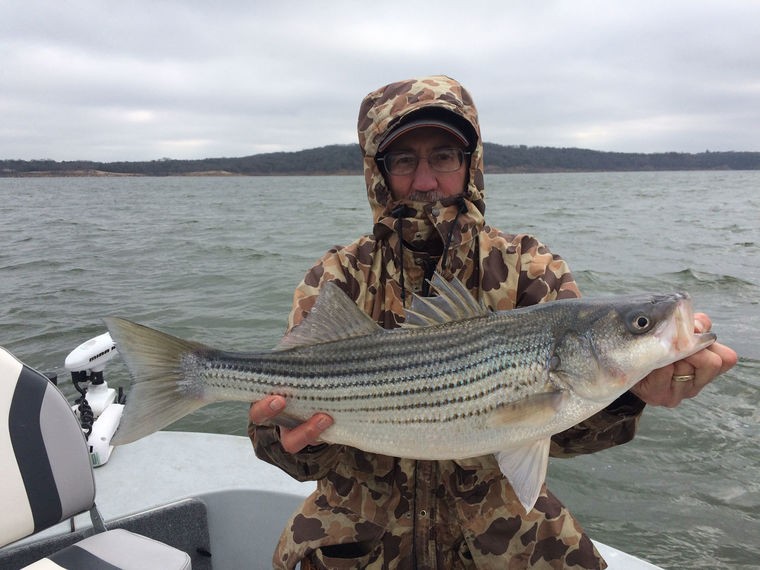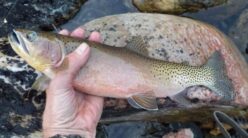Recently, I was down in Texas conducting seminars at the Dallas Safari Club Convention and Expo. On Monday and Tuesday, I duck hunted in East Texas with Charles Allen, the owner of Knives of Alaska and Diamond Blades. Then I was going to be crow hunting in North Texas on Friday and Saturday.
I had Wednesday free so I called my brother, and he lined us up a striper fishing trip on Lake Texoma with Striper Express owned by Bill Carey, who has guided on the lake for decades. His son Chris was going to guide us.
The day was predicted to be cold and windy, but rain was predicted for the rest of the week. Normally the guides have you meet them at daylight but Chris said he’d been catching them midmorning so we met him at the boat house at 10 a.m.
Chris is a young gung-ho guide, which is what you want. Some days anyone can catch fish, but on a high percentage of the days you have to pull all stops and hit it hard. That’s fishing.
Chris told us a few of the lures that had been working for him and asked us which ones we wanted to start with. I’m a big believer in everyone using something different lures at first to find out what they’re hitting on.
I started out with some of my big Mister Twister plastics. Because of the wind, we all slapped on a big Road Runner and then tipped them off with different colored plastics. He had a bottle of Chartreuse paint that we dipped the tails in.
Because of the high winds, we used some heavy Road Runners so we could get to the bottom because that’s where the fish were hanging out. A Road Runner is basically a fancy jig. They have a spinner on them to further attract fish and a bucktail. You then slap a plastic on them. I don’t remember now but I think we were using 4- to 6-inch tails.
Chris instructed us that the fish were on the bottom and biting super soft. He said to cast out and count to 10 before we started retrieving. That size jig was dropping about 3 feet per second. He said it wouldn’t hurt twice per retrieve to hit the release momentarily to ensure that we stayed on bottom.
It was cold, and as the day progressed it got windier and windier. That makes it tough for a captain to hold the boat in a good fishing position for everyone. As usual, I forget the exact sequence of events, but we started getting into them pretty fast. Wow, I love catching stripers. I always forget how great fighters that they are. When they hit, it’s like an 18-wheeler drove by and snagged your line. They fight hard until they’re netted.
Chris was right: You had to reel super slow or you just didn’t get a hit. I don’t think that you could retrieve too slow. If you felt a bump, set the hook. Of course fishing like this on bottom, you sometimes hung a piece of Texas, which is a nice way of saying you snagged the bottom.
You’re allowed to keep two fish over 20 inches and five under 20. We had a tough time catching any small fish. We only caught three, the rest were over 20. As the day closed, Chris informed us that we’d netted right at 41 fish. What a great day we had.
I was glad I’d packed extra clothes because when the wind whipped up it’d gotten extra cool. Plus, it’s always colder on the water. In fact, let’s take a second and go over that.
In the days before refrigeration in the theaters in London, they put a block of ice on the stage and ran a fan over it to help cool the theater. When you’re on the downwind side of a lake, the same thing is happening to you. So always carry extra clothes and a wind breaker when going out on a fishing trip.
Tom Claycomb lives in Idaho and has outdoors columns in newspapers in Alaska, Idaho, Utah, Nevada, Colorado and Louisiana. He also writes for various outdoors magazines and teaches outdoors seminars at stores like Cabela’s, Sportsman’s Warehouse and Bass Pro Shop.



